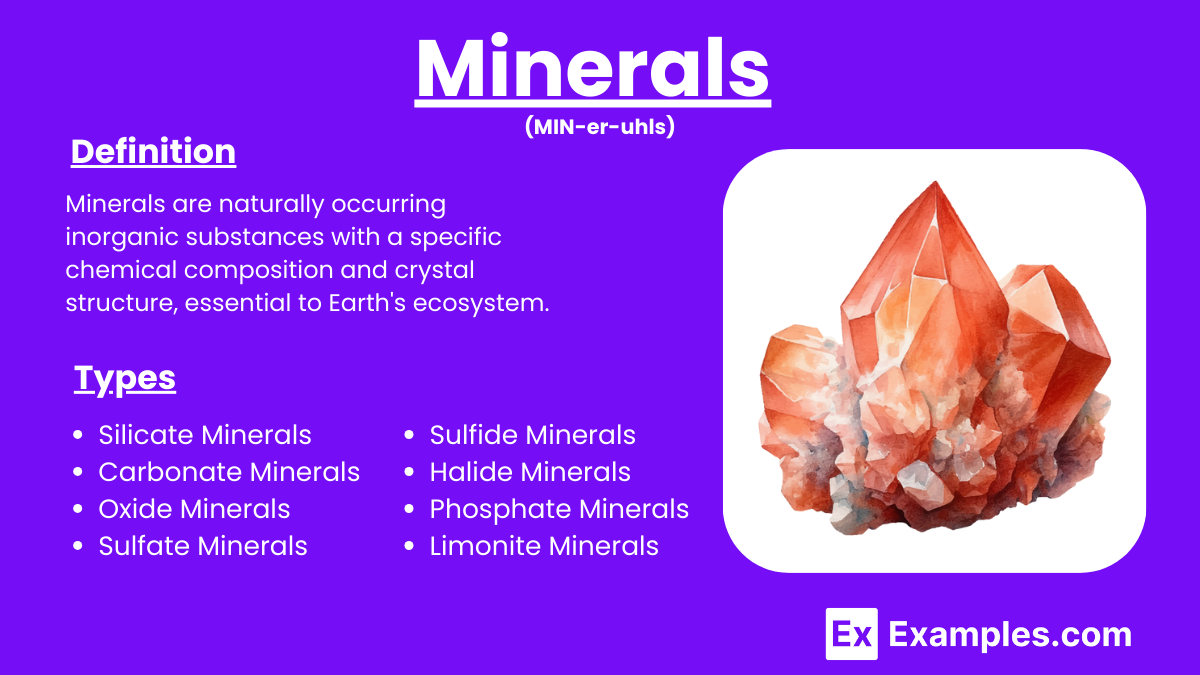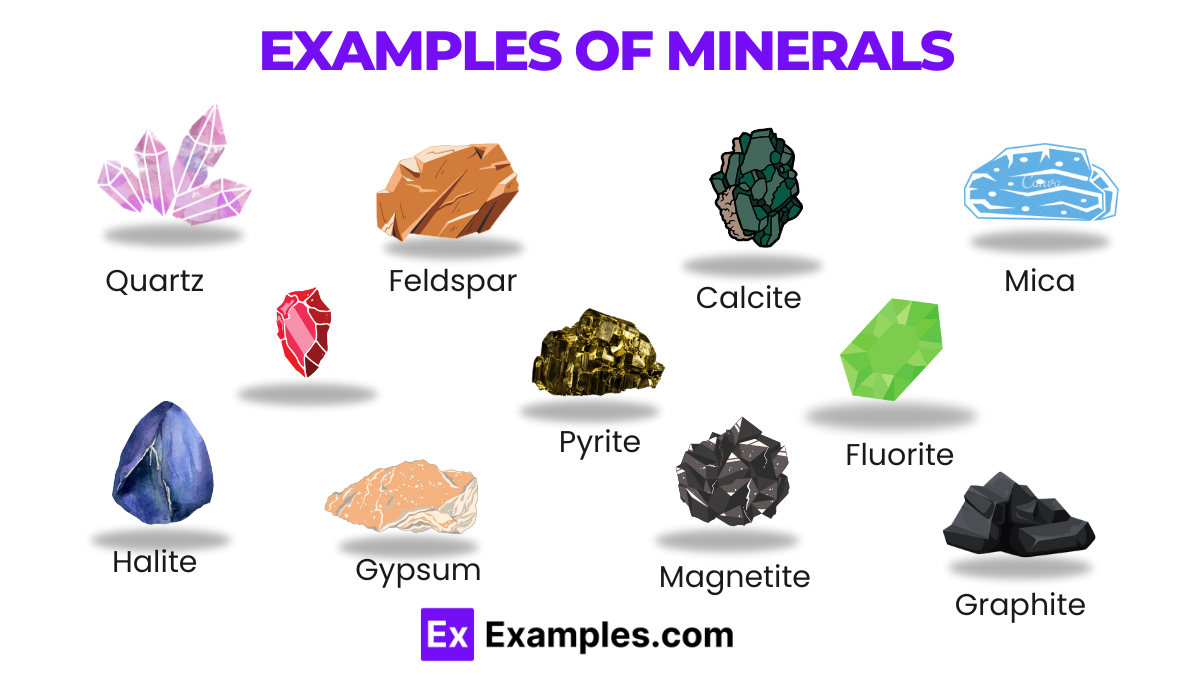Which mineral is essential for the formation of hemoglobin in red blood cells?
Calcium
Iron
Magnesium
Potassium


Minerals are natural resources essential for various biological and geological processes. Found in the Earth’s crust, minerals form through natural geological processes over millions of years. These inorganic substances, with specific chemical compositions and crystalline structures, are vital for human use in industries, agriculture, and technology. Minerals like quartz, feldspar, and mica contribute to soil fertility and construction, while metals like iron, copper, and gold drive industrial advancements. Understanding minerals is crucial for sustainable resource management.
Minerals are naturally occurring, inorganic substances with a specific chemical composition and crystalline structure. Found in the Earth’s crust, they are essential components of rocks and ores. Examples include quartz, feldspar, and calcite, each with unique properties and industrial uses.

Minerals are naturally occurring, inorganic substances with a definite chemical composition and crystal structure, forming the building blocks of Earth’s crust. They play a crucial role in the ecosystem by providing essential nutrients for plant growth and serving as raw materials for various human activities. Common minerals include quartz, feldspar, and mica, each contributing to soil formation and influencing water retention and erosion processes. Understanding minerals is key to studying Earth’s geology and sustaining its ecosystem.
Minerals are identified through characteristics such as color, streak, hardness, luster, cleavage, fracture, and specific gravity. Classification is based on their chemical composition, grouping them into classes like silicates, carbonates, oxides, sulfates, and halides. For instance, quartz is a silicate with a hardness , while calcite is a carbonate with a hardness, Understanding these properties helps in accurate identification and classification of minerals.
| Aspect | Mineral | Rock |
|---|---|---|
| Definition | Naturally occurring inorganic substance with a specific chemical composition and structure. | Aggregates of one or more minerals or mineraloids. |
| Composition | Consists of a single chemical substance. | Composed of multiple minerals or organic materials. |
| Structure | Has a definite crystalline structure. | Can have various structures, either crystalline or non-crystalline. |
| Examples | Quartz, Feldspar, Calcite, Mica. | Granite (composed of quartz, feldspar, and mica), Limestone (composed mainly of calcite). |
| Formation | Formed through geological processes such as crystallization from magma. | Formed through processes including sedimentation, metamorphism, and volcanic activity. |
| Homogeneity | Homogeneous (same material throughout). | Heterogeneous (mixture of different materials). |
Minerals form through geological processes such as crystallization from magma, precipitation, and alteration.
Feldspar is the most abundant mineral in Earth’s crust.
Silicate minerals are composed of silicon and oxygen, making them the most common mineral group in Earth’s crust.
Minerals are identified by properties like color, hardness, luster, streak, and cleavage.
Diamond is the hardest mineral, ranking 10 on the Mohs hardness scale.
Talc is the softest mineral, ranking 1 on the Mohs hardness scale.
A mineral is a single substance with a definite composition, while a rock is an aggregate of one or more minerals.
A crystal is a solid material whose atoms are arranged in a highly ordered, repeating pattern.
A mineral’s streak is the color of its powder when rubbed on a porcelain streak plate.
Text prompt
Add Tone
10 Examples of Public speaking
20 Examples of Gas lighting
Which mineral is essential for the formation of hemoglobin in red blood cells?
Calcium
Iron
Magnesium
Potassium
What mineral is most commonly associated with bone health?
Zinc
Iron
Calcium
Sodium
Which mineral is important for nerve function and muscle contraction?
Phosphorus
Potassium
Selenium
Copper
What role does magnesium play in the body?
It aids in protein synthesis
It is a major component of DNA
It regulates blood sugar levels
It helps with bone density
Which mineral is crucial for the synthesis of thyroid hormones?
Iron
Iodine
Fluoride
Manganese
What mineral is often added to table salt to prevent goiter?
Iron
Calcium
Iodine
Zinc
Which mineral helps protect cells from oxidative damage?
Copper
Selenium
Iron
Sodium
What is the primary function of phosphorus in the body?
Maintaining fluid balance
Building DNA and R
Assisting in muscle contractions
Regulating blood pressure
Which mineral is important for the formation of collagen?
Calcium
Vitamin C
Zinc
Magnesium
What is a common symptom of mineral deficiency?
Increased energy
Improved immunity
Fatigue
Enhanced cognitive function
Before you leave, take our quick quiz to enhance your learning!

